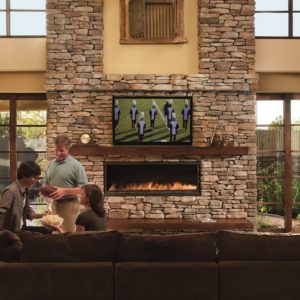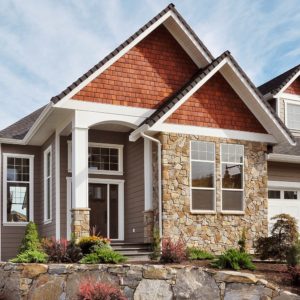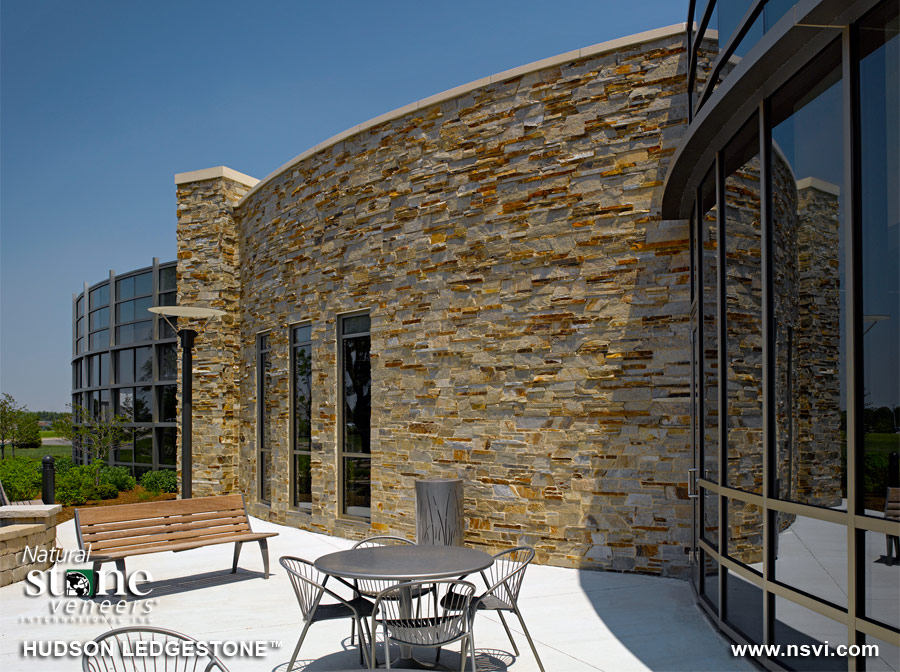 When looking to spice up the bland white vinyl siding of your house, or complete that luxurious look on your living room fireplace to impress your guests, the options can be a little overwhelming. Among all the different styles including lumber and stucco, one stands out from the rest providing an extremely unique and pleasing look for your next project: stone veneer. Stone veneer is simply pieces of stone (natural or manufactured) that are cut to roughly one inch thick and must weigh less than 15 pounds per square foot. They are then mortared onto a vertical surface as a protective and highly decorative display. Two key forms that stone veneer comes in are Natural Stone Veneer and Adhered Manufactured Stone Veneer. Which one is right for you would depend on what look you want and what your budget is for the project.
When looking to spice up the bland white vinyl siding of your house, or complete that luxurious look on your living room fireplace to impress your guests, the options can be a little overwhelming. Among all the different styles including lumber and stucco, one stands out from the rest providing an extremely unique and pleasing look for your next project: stone veneer. Stone veneer is simply pieces of stone (natural or manufactured) that are cut to roughly one inch thick and must weigh less than 15 pounds per square foot. They are then mortared onto a vertical surface as a protective and highly decorative display. Two key forms that stone veneer comes in are Natural Stone Veneer and Adhered Manufactured Stone Veneer. Which one is right for you would depend on what look you want and what your budget is for the project.
Natural Stone Veneer is exactly what it sounds like; it’s real stone pieces that have been picked or quarried and then cut and sliced to specified dimensions by the seller. Natural Stone Veneer is something that many people have an eye for. Being actual stone, its look is second to none with natural grooves and clefts in the stone together with pleasing earthy colors. The charismatic appeal of the stone works perfectly alongside the longevity of it. Natural stone will never fade in color and does not crack or wear over time; it can last for centuries if installed properly. It is lightweight enough to be installed without extra support such as wall ties, and is relatively affordable.
 The alternative to Natural Stone Veneer is the Adhered Manufactured Stone Veneer, or AMSV. AMSV is not natural stone; it is a wet cast product made from cements, aggregates, and pigments for coloring. The molds used in the process simulate natural stone clefts, but as there are not an unlimited number of molds, the look of the AMSV cannot quite stand up to natural stone. It also is not quite as strong and durable as natural stone and any chips on the face after installation would reveal the undesirable inner concrete. Being manufactured comes with plenty of advantages, though. Manufacturing allows for many freedoms or consistency in the coloring of the stone. Vast amounts of different color combinations and blends can be made using AMSV that would not be available from natural stones. They are also more lightweight than natural stone and can cost anywhere from 1/2 to 1/3 of the price, so they are much easier to install and much more affordable.
The alternative to Natural Stone Veneer is the Adhered Manufactured Stone Veneer, or AMSV. AMSV is not natural stone; it is a wet cast product made from cements, aggregates, and pigments for coloring. The molds used in the process simulate natural stone clefts, but as there are not an unlimited number of molds, the look of the AMSV cannot quite stand up to natural stone. It also is not quite as strong and durable as natural stone and any chips on the face after installation would reveal the undesirable inner concrete. Being manufactured comes with plenty of advantages, though. Manufacturing allows for many freedoms or consistency in the coloring of the stone. Vast amounts of different color combinations and blends can be made using AMSV that would not be available from natural stones. They are also more lightweight than natural stone and can cost anywhere from 1/2 to 1/3 of the price, so they are much easier to install and much more affordable.
Both types are very practical and widely used. It really can come down to whether you would like a more earthy, natural look to the stone, or a unique and eye popping look to accent your existing structures. Here at Landis Block we have multiple suppliers to choose from to match your tastes including Boral’s Cultured Stone® and ProStone® for the manufactured and Pinnacle Stone, Quarry Cut Stone and Natural Stone International for the natural stone veneers.

